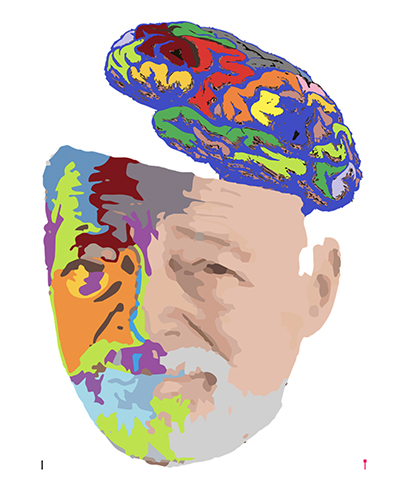Stephen Doster
-

Johnson one of six new endowed chairs
by Kate Derrick May. 3, 2019, 8:15 AM (L to r) Brian T. McCann, Matthew S. Freiberg, Provost Susan R. Wente, Edward Wright-Rios, Ben Ho Park, Owen D. Jones, Carl H. Johnson (Joe Howell/Vanderbilt University) Vanderbilt’s six newest endowed chairs were honored by colleagues,… Read MoreMay. 3, 2019
-

Wilson appointed to ASGCT board of directors
May. 2, 2019, 8:33 AM by Kelsey Herbers The American Society of Gene and Cell Therapy (ASGCT) has appointed Matthew Wilson, MD, PhD, associate professor of Medicine in Vanderbilt’s Division of Nephrology and Hypertension, to its board of directors. Beginning in May 2019, Wilson will serve a three-year term as… Read MoreMay. 3, 2019
-

A new antibiotic’s mechanism of action
Apr. 25, 2019, 11:30 AM by Leigh MacMillan The novel antibacterial drug gepotidacin is showing clinical promise for the treatment of skin infections and gonorrhea. Gepotidacin was developed in response to the rising bacterial resistance to fluoroquinolone drugs such as ciprofloxacin. Like fluoroquinolones, gepotidacin acts on the bacterial enzymes gyrase… Read MoreMay. 3, 2019
-

Immune ‘pruning’ in schizophrenia
Apr. 25, 2019, 11:00 AM by Bill Snyder Arguably the most replicated post-mortem finding in schizophrenia is the loss of dendritic spines from pyramidal cells in the brain’s prefrontal cortex, which is involved in decision-making, attention and moderating social behavior. Pyramidal cells are cortical neurons that communicate with distant neurons. Read MoreMay. 3, 2019
-

Taming the Fear Response
The Scream, Edvard Munch, PD-US-expired. Disorders arising from trauma and stress, such as post-traumatic stress disorder (PTSD), are a major cause of morbidity and mortality, and they exact a huge economic toll on our society. Hence, a major effort is underway to find new treatments for these diseases. A clue… Read MoreApr. 30, 2019
-

Study expands insight on shrinking pancreas in type 1 diabetes
Apr. 25, 2019, 8:46 AM Investigators using MRI technology to study changes in pancreatic volume to better understand the progression of Type 1 diabetes include, from left, Melissa Hilmes, MD, Daniel Moore, MD, PhD, Alvin Powers, MD, Jon Williams, PhD, and Jack Virostko, PhD. (photo by Jessica Kimber) by Jill… Read MoreApr. 29, 2019
-

Study merges big data and zebrafish biology to reveal mechanisms of human disease
Apr. 24, 2019, 8:14 AM From left, Nancy Cox, PhD, Gokhan Unlu, PhD, Eric Gamazon, PhD, and Ela Knapik, MD, are using computational genetics to study the genetic mechanisms that contribute to human disease. (photo by Steve Green) by Leigh MacMillan In a series of studies that volleyed between large… Read MoreApr. 29, 2019
-

Home
Mission The mission of the VU Biomolecular Multimodal Imaging Center (BIOMIC) isto build a platform of integrated technologies for imaging and molecular analysis that enables the construction of comprehensive 3-dimensional (3-D) molecular atlases of human tissues. The technologies that we are bringing together in BIOMIC have been specifically selected to… Read MoreApr. 26, 2019
-

A new framework for genome-wide association studies
A multi-institutional team of researchers, led by Basic Sciences faculty member Bingshan Li (Molecular Physiology & Biophysics), has developed a new framework that can help researchers learn more from genome-wide association studies (GWAS) than previously was possible. Their work was published in Nature Neuroscience. Read MoreApr. 25, 2019
-

Yohn named Postdoc of the Year at annual symposium
Apr. 22, 2019, 1:59 PM By Irene McKirgan Samantha Yohn, 2019 Vanderbilt Postdoc of the Year. (Anne Rayner/Vanderbilt) Postdoctoral scholar Samantha Yohn has been named Postdoc of the Year by the Office of Postdoctoral Affairs for her exceptional research scholarship. Since 2008, the… Read MoreApr. 24, 2019